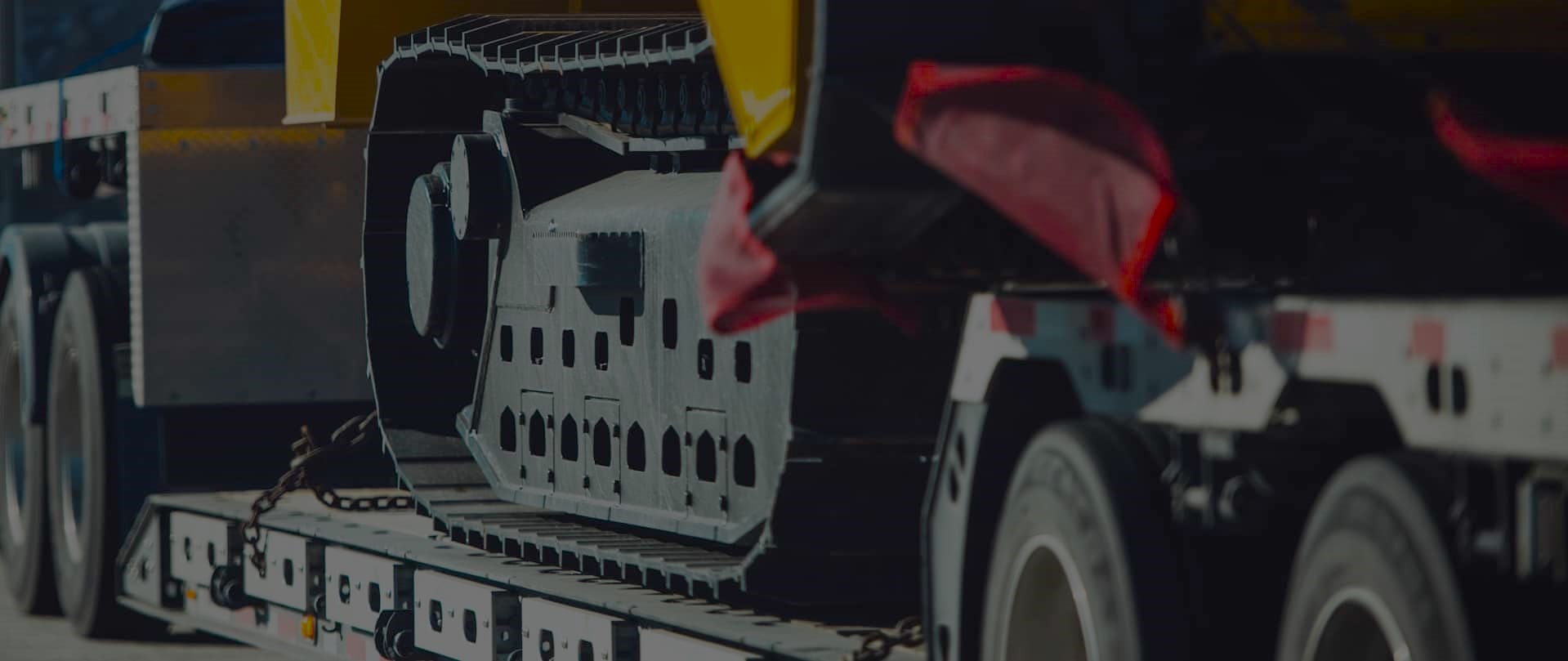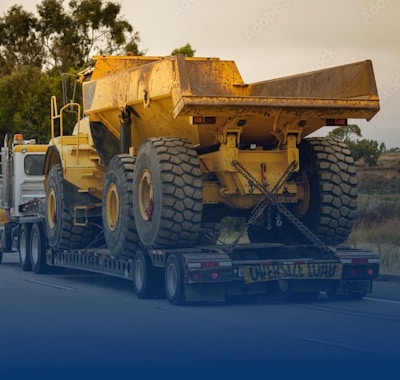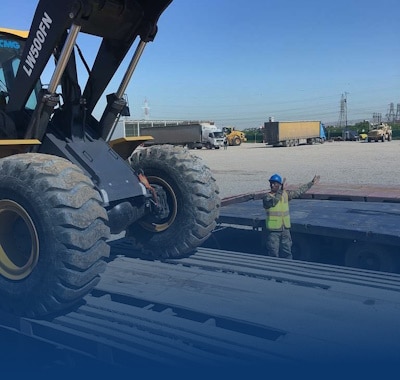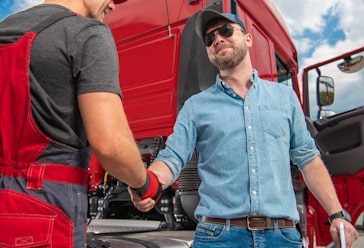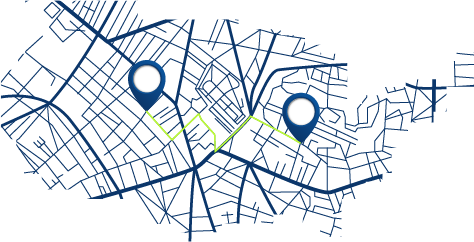How West Coast Oversized Permits Differ from Inland States
Freedom Heavy Haul can offer expedited Pickup and Delivery for any size shipment anywhere in the USA. Contact us today for No Hassle, No Pressure Pricing.
Moving a load that exceeds legal size or weight changes every time you cross a border. Coastal terrain, port access, and city grids shape route approvals and travel windows in ways that inland corridors rarely face.
Each state issues and enforces permits in its own way. Knowing regional norms helps carriers avoid rejections, delays, and costly fines — for example, California fines often fall between $3,000 and $4,000, while Texas penalties can be about $100 to $150.
This guide previews practical differences in documentation, timing, and escort needs for vehicles in California, Oregon, and Washington versus routes through the Rockies, Plains, and Midwest. You will learn about validity windows, daylight-only rules, and weekend limits that affect a trip’s schedule.
Tools and teams — permit departments or compliance partners — speed up approvals by providing accurate information up front. Next, we cover baseline dimensions, coastal nuances, inland snapshots, permit types, routing, escorts, and a step-by-step process to obtain oversize approvals faster.
What This Ultimate Guide Covers and Who It’s For
This guide lays out clear steps and checks for moving loads that exceed legal limits across multiple jurisdictions. It is written for carriers, brokers, heavy-haul dispatchers, and fleet managers who plan oversize overweight moves of vehicles and equipment.
Core coverage:
- Types of permit and when a single trip or annual authorization is required.
- State-by-state rules, timing and travel windows, and escort needs.
- How vehicle configuration, commodity, and route affect approvals and routing.
Use this guide to decide when to self-file versus when to hire a permit department or compliance service. It explains the paperwork for city and county roads at origin or destination, and the tracking needed for annual authorizations.
Drivers get practical tips on document organization, route verification, and communicating with agencies to keep a trip moving. You will also find checklists and step-by-step process items to obtain oversize permissions efficiently and avoid rejections at scale houses.
Finally, learn how different vehicles — multi-axle lowboys, extendable trailers, and specialized rigs — change routing, travel limits, and escort plans so you can budget time and stay compliant.
How West Coast oversized permits differ from inland states
Port traffic, urban congestion, and steep grades force planners to sequence approvals differently than on flatter corridors. Electronic filing in California, Oregon, and Washington speeds processing, but larger metro grids raise the cost of a misfiled permit — fines in California can reach $3,000–$4,000.
Terrain, ports, and congestion shape permit strategies
Near ports, route reviews often add bridge checks and utility clearance tasks. Tight streets and heavy truck volumes mean escorts get scheduled earlier and travel windows shrink.
Construction corridors and agricultural routes change priorities
Coastal metro bottlenecks and ongoing construction push planners to widen timing buffers. By contrast, rural harvest surges shift inland routing and trip timing seasonally.
Enforcement culture and documentation expectations vary
West Coast agencies stress full paperwork and exact route adherence, while some interior jurisdictions focus more on weight distribution and reducible-load rules.
- Tip: Consistent axle spacings, clear dimensions, and commodity specifics reduce questions and help you obtain oversize approvals faster.
- Align equipment: Match load distribution to known size weight limits in dense metros.
Core size and weight baselines every state starts from
A simple checklist of width, height, and axle limits often settles whether a trip needs special authorization. Use these national baselines as your starting point when you measure a load or prepare paperwork.
Legal dimensions and common thresholds
Width: 8’6″ is the typical legal maximum. Exceed that and a permit is usually required.
Height: 13’6″ is standard; some jurisdictions allow 14’0″. Always verify the exact rule before assuming no permit is needed.
Axle and gross limits
Single axle: 20,000 lbs. Tandem: 34,000 lbs. Gross vehicle weight: 80,000 lbs. Exceeding these weight numbers typically triggers a permit and may add axle spacing documentation.
Length, overhang, and practical choices
Length and overhang limits vary by state. Many carriers require a single trip permit when length exceeds about 65′ or when overhang rules are breached.
Practical note: Extendable trailers, jeep/dolly setups, or extra axles help distribute size weight and meet legal limits without repeated revisions.
- Measure first: Capture verified dimensions, axle spacings, and gross/axle weights at the unit to avoid rejections during enforcement checks.
- Expect routing: Permits for length, width, height, or overhang often include specific route assignments and travel windows.
- Documentation matters: Accurate declarations reduce revision cycles and speed permit issuance.
West Coast nuances: California, Oregon, and Washington
Electronic filing speeds approval, but urban constraints raise the cost of mistakes for big loads. Agencies on the Pacific edge expect detailed declarations and exact axle spacings to speed review. Plan for strict route checks in dense metros and heavy enforcement in major ports.
California
Electronic permits are accepted statewide, and they speed processing. Fines for noncompliance can reach $3,000–$4,000, so precise data matters.
Oregon
Oregon is known for robust route management. Assigned paths and clearance checks rely on accurate weight and dimension information.
Washington
Washington also accepts electronic filings. Coastal storms and mountain closures can pause a trip or change when a permit is valid.
- Detail matters: Clear load descriptions and axle spacings often reduce revision cycles.
- Metro triggers: Tight streets cause a permit required flag to fire faster in big cities.
- Sequence tips: When a trip crosses CA, OR, and WA, stagger applications so approvals align with dispatch timing.
| Jurisdiction | Electronic Filing | Key Concern |
|---|---|---|
| California | Yes | High fine exposure, port congestion |
| Oregon | Yes | Strict route adherence |
| Washington | Yes | Weather and pass closures |
“Carry clear electronic documentation and set weather buffers; it keeps inspections simple and trips on schedule.”
Tip: Keep electronic files organized and show them on a device during roadside checks to prove compliance quickly.
Inland states snapshot: Rockies, Plains, and Midwest practices
Operators moving large freight across central corridors must plan for elevation, wind, and time-limited approvals. Central routes focus more on load reducibility, axle spacing, and seasonal limits than on dense urban clearances. Read on for key inland differences that affect a trip.
Pennsylvania specific constraints
Reducible-load rule: Pennsylvania will not issue special hauling permits for loads that can be reduced. That can force shippers to reconfigure a load before filing.
Trip permits are short: a trip permit is valid only for five days and covers a single direction. A return trip may be authorized, but it must be requested up front. Annual permits exist for select manufactured items like mobile homes or steel coils.
Great Plains and Mountain West impacts
High winds on I-80 and I-90 make speed limits, spacing, and weather holds conservative. Elevation and steep grades in the Mountain West reduce vehicle performance and change spacing needs during climbs and descents.
Winter closures, spring thaw limits, and local construction further shape routing and daily travel plans. Major bridge work zones can create choke points that lengthen daily legs.
- Documentation note: Inland reviews often center on reducibility and axle weight distribution, while coastal checks stress congestion and clearance specifics.
- Planning tip: Build wind buffers, align trip permits across each state to avoid validity gaps, and allow extra time near known construction hotspots.
“Plan for weather and grade limits early; it keeps trips moving and avoids costly rework.”
Permit types you’ll use most across regions
Pick the right authorization early. This saves hours and avoids stops that can cost time and money.
Single trip oversize and overweight
Single trip permit covers loads that exceed one or more legal thresholds. Use it when width passes 8’6″, height passes 13’6″, length exceeds about 65′, or gross weight goes over 80,000 lbs.
Weight exceedances may need separate overweight authority on the same filing. A clear drawing and axle spacings speed approval.
City and county local approvals
Local permit approval is often required for origin or destination access on tight streets. Missing a city or county permit can halt a move at the gate.
Annual and superload authorizations
Annual permits suit frequent routes but carry strict size weight limits and renewal duties. Track expirations to avoid costly lapses.
Superload filings apply when an indivisible unit exceeds standard limits. They usually need route surveys, utility clearances, pilot or pole cars, and sometimes police escorts.
Trip and fuel credentials
Trip permits (IRP) and fuel permits (IFTA) cover units lacking full registration. Thresholds often depend on axle count and GVW; verify before dispatch.
- Paperwork to carry: signed permit, vehicle weights, axle spacings, route map, shipper letter, and insurance.
- Choose single trip oversize when moves are rare; opt for annual permits if corridors repeat.
| Permit | Use Case | Key Requirements |
|---|---|---|
| Single trip permit | One-time over-size or over-weight load | Dimensions, axle spacing, route |
| City/county permit | Local streets at origin/destination | Local map, restrictions, contact info |
| Annual permits | Frequent repetitive moves | Unit limits, renewal dates, commodity rules |
| Superload | Indivisible loads beyond standard limits | Surveys, utility clearance, escorts, engineering |
| Trip/IFTA | Unregistered or non-IFTA power units | Registration numbers, GVW, axle count |
“Carry the right documents, and inspections go fast.”
Route planning, surveys, and approvals that change with geography
Route planning for large moves must start with a geography check — grades, clearances, and local work zones change the game. Mountain passes need grade analysis and weather windows. Bridges require weight and height checks to protect structure and cargo.
Mountain passes, bridge limits, and utility clearance approvals
Analyze grade, speed limits, and engine performance on long climbs. Check bridge ratings for size weight loads and confirm low clearance points for height and dimensions.
Utility clearances may need formal approval or a bucket truck referral to lift lines temporarily. Allow lead time for coordination and paperwork to obtain oversize overweight authorization.
Urban constraints: city streets, county routes, and construction zones
Urban moves demand precise route assignments, timing windows, and coordination with local roads and construction crews. Tight turns and parked vehicles change turning radii and require updated vehicle drawings.
When to order route surveys, pole cars, and bucket trucks
Order a survey for tall loads, complex interchanges, or detours that desk reviews cannot verify. Use a pole car to measure overhead wire sag and a bucket truck when lines must be raised.
- Pre-trip site walks catch curb-to-curb limits and hidden obstacles.
- Sequence permit filings after survey results so assigned routes match reality.
- Accurate equipment specs and dimensions speed approvals and cut reroutes.
Escort, pilot car, and police requirements compared
Escort plans shape timing, cost, and route flexibility. Knowing when a move needs support saves phone calls and delays.
Understanding pilot car and pole car thresholds
Most jurisdictions set triggers for a pilot car based on width, height, or length. For example, wide loads over common lane widths will commonly need at least one pilot car.
Pole cars travel ahead of tall loads to check wires and bridges in real time. They cut risk on routes with unknown clearances and speed up inspections.
Superload moves that may require state police escorts
When a load is a superload due to extreme weight or length, many agencies require state police. That need impacts scheduling and may reduce routing options.
Police escorts add planning time and higher fees. They also improve lane control on tight corridors and during complex maneuvers.
- Coordination tips: Plan spacing, radio channels, and backups for weather or traffic delays.
- Carry copies of the permit, route turns, and contact info for utility or construction coordinators.
- Verified dimensions, including height and axle weight, reduce unnecessary escort requests.
- Build escort availability into timelines, especially during peak construction seasons.
“Debrief after every escorted trip to update your playbook and cut future costs.”
Digital versus paper permits by region in the present day
Carriers must adapt document workflows when trips cross digital-friendly and paper-first regions. Electronic filing is standard in California, Oregon, and Washington, so drivers often show approvals on a tablet.
Electronic acceptance on the Pacific edge
California, Oregon, and Washington accept electronic filings and usually let crews display a digital permit during inspection. Save the permit issued confirmation as a PDF and screenshot it.
Paper-first or recommended jurisdictions
Pennsylvania requires a printed copy at scales. Texas accepts electronic files but recommends carrying a paper backup to speed checks.
Managing mixed documentation on multi-state trips
Practical checklist:
- Keep electronic files on two devices and a cloud folder.
- Print a backup set for any paper-required stops and slot print time into the trip plan.
- Save the permit issued confirmation in PDF and screenshot formats to avoid battery or signal issues.
- Use a central information log that notes each state’s display rules so crews can present the correct file quickly.
“Redundancy — both digital and paper — keeps worksites moving and reduces citation risk.”
Timing, validity, and travel windows to expect
Plan permit windows like project milestones: lock dispatch, escorts, and staging to the authorized date range. Effective timing keeps crews aligned and reduces mid-route surprises.
Trip permit duration and staging
Some trip permits are short. For example, Pennsylvania authorizes a trip permit for five days and for a single direction. A return trip must be requested up front to be allowed.
Back-plan dispatch so loading, staging, and departure fall inside the permit valid window. Match escort bookings and site access hours to avoid missed dates.
Daytime, weekend, and seasonal limits
Many jurisdictions restrict daytime travel only, bar weekend moves, or close routes on holidays. These rules affect delivery promises and crew schedules.
Seasonal limits — wind seasons, winter closures, and spring thaw — can compress when a permit is valid month to month. Build extra days when weather risk is high.
- Communicate delays: Notify agencies immediately if weather or breakdowns threaten permit expiry.
- Conservative ETAs: Use buffer days and add margin for fuel, rest, and inspections inside allowed travel windows.
- Sequence tips: Pair permit effective dates with escort availability and site hours for smooth handoffs.
“Build buffers into every oversize run — it saves time and avoids permit lapses.”
Fees, budgeting, and what drives total permit cost
Budgeting for oversize and heavy moves begins by tallying every state fee and service charge you’ll face. Start with the base filing fee in each jurisdiction, then add a small service charge per filing to cover processing and admin.
Typical fee structure
Most filings include a base charge plus about a $15 service fee per state. Multiply that by the number of jurisdictions on your route to get a baseline.
Sample averages and real drivers
Sample averages help set expectations: Illinois runs near $55 and Oklahoma near $50, though dimensions and weight shift those numbers.
Commodity type, route complexity, and engineering reviews can push totals higher. Complex turns, bridge checks, and utility coordination add labor and vendor charges.
Line items that add up
- Pilot car and pole car services — hourly or per-trip rates.
- Bucket truck or utility coordination for overhead clearance.
- Route surveys and engineering letters for heavy or long loads.
- Extra fees for revisions when dimensions or axle spacing change after filing.
Tip: Collect precise measurements early to avoid rework fees and wasted escorts. Budget a contingency for weather delays or rescheduling pilot car crews and build that buffer into customer quotes.
“Track historical spend by corridor and vehicle type to refine future estimates.”
Compliance pitfalls, fines, and how to avoid them
Regulatory risk rises quickly when paperwork, measurements, or on-truck configuration don’t match the filed authorization. Catching errors before departure saves time and prevents expensive stops.
California fine exposure versus Texas lower ranges
California enforcement can levy fines near $3,000–$4,000 for violations. By contrast, Texas penalties are often around $100–$150. These gaps show why exact filings and careful checks matter more in some jurisdictions.
Reducible load rules and documentation that keeps you legal
Pennsylvania and certain other jurisdictions will deny a request if a load can be reduced. If a load can be rearranged or dismantled, a permit required flag may block approval until it is.
- Document precisely: record axle spacings, verified dimensions, and a shipper letter for indivisible cargo.
- Audit before roll: match the actual configuration on the vehicle to the issued permit.
- Run a quick pre-move briefing to review route restrictions, curfews, and special notes that permits may include.
- Keep photos and measurements on file to speed appeals or roadside clarifications.
Escalation plan: list a state contact, your compliance lead, and a back-up dispatcher so teams know who to call if a route becomes impassable or a condition changes. This keeps the trip moving and helps you obtain oversize approvals faster when questions arise.
“Audit documentation, align the truck to the permit, and brief crews — those habits cut citations and downtime.”
Your step-by-step path to obtain oversize/overweight permits today
Measure the unit and calculate gross and axle weights first to avoid mid‑route rejections. Confirm length, width, height, and documented axle spacings before you file so the filing matches the truck and equipment on board.
Gather VINs, plate numbers, origin/destination, county roads choices, and alternate routes. Decide a single trip permit or annual permits when moves repeat, and order trip and fuel credentials if the unit lacks IRP/IFTA coverage.
Pre‑validate clearances, request surveys or pole cars when needed, then submit applications with aligned dates and monitor for a permit issued confirmation. Carry electronic and printed copies, brief the crew, execute the trip, and debrief to improve future runs.
